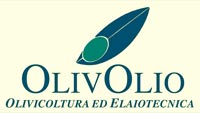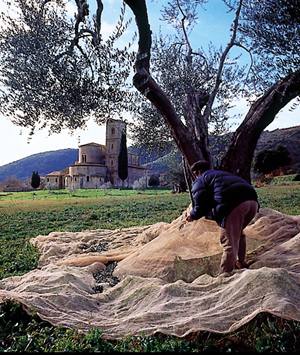
TRADITIONAL OLIVE
GROWING
OPTIMISED SYSTEMS OF FUNDAMENTAL TECHNIQUES
|
|
TRADITIONAL OLIVE
GROWING OPTIMISED SYSTEMS OF FUNDAMENTAL TECHNIQUES |
|
NEW OLIVE GROWING TECHNIQUES PRUNING FERTILIZATION MECHANIZATION NEW TRADITIONAL PLANTATION

-
Individual Planning for
each Estate to obtain the maximum Reduction of Costs and to increase Production
(Pruning and Fertilization)
-
Optimal Choice of Systems and Techniques of Pruning
-
Free Form of Pruning with
maximum Reduction of Labour
-
Choice of Mechanical
Harvesting suitable for the Estate with Management and Training of the Labour
Force required
-
Effective Disease (Phytosanitary)
and Weed Control, with a choice of Chemical,
Mixed or
Organic Control.
-
Programming and Control of
Irrigation and Fertilization Systems
-
Foliar Fertilization for
Increased Flowering and Fructification
The most important aspect of olive growing for the future involves the perfecting of basic systems and techniques: pruning, fertilization, phytohealth defences, mechanisation, and above all the creating of new systems according to more modern and rational agronomic criteria.
This is the phase that will meet with the greatest number of problems
over the next few years due to high costs and the growing scarcity of
skilled labour capable of carrying out this important and equally delicate
operation. Modern-day criteria suggest the pruning of olive trees in
a less aggressive manner than in the past. Excessive pruning in fact
causes the plant to shift its own biological equilibrium towards the
differentiation between "leaf" buds and "flower"
buds, thus contributing towards the so-called "alternation"
in production that represents one of the main drawbacks in modern and
profitable olive growing.
With the developing of several "clonal selections" of specific
varieties, still in the experimental phase, we will eventually finish
upwith mechanical and inline pruning, and even non-pruning.
 Less pruning is therefore the answer to keeping growing costs down and
achieving a superior "olive yield", if combined however, with
a suitable and above all "targeted" fertilization.
Leaf-fertilization is subsequently taking on a more important role, and while it must not
replace in-depth fertilization (or composting), it can often be integrated
at extremely low costs compared to the results obtained. With targeted
leaf-fertilization based on specific products consisting of active,
organic biostimulators (vitamins, enzymes, humic and fulvic acids)
Less pruning is therefore the answer to keeping growing costs down and
achieving a superior "olive yield", if combined however, with
a suitable and above all "targeted" fertilization.
Leaf-fertilization is subsequently taking on a more important role, and while it must not
replace in-depth fertilization (or composting), it can often be integrated
at extremely low costs compared to the results obtained. With targeted
leaf-fertilization based on specific products consisting of active,
organic biostimulators (vitamins, enzymes, humic and fulvic acids)
as well as macro and micro elements indispensable for the physiological
processes of the tree, surprising results can be obtained at more than
acceptable costs, with production increases of up to 100%.
This however, requires intervention during the fundamental phases of
the biological phases, and consequently the productive life of the olive
tree: vegetative recovery, pre-flowering, setting, hardening of the
stone and oil enrichment.
MECHANIZATION
For the complete mechanisation of the olive grove the system must be
pre-arranged right from the beginning, with regard to both the choice
of cultivars and/or clonal varieties, and the form of plant breeding
and arrangement of the installations. With traditional olive growing,
(meaning trees already in existence), partial forms of mechanisation
can be introduced, with mechanical aids like the vibrating combs which
stand out thanks to their ability to double and even triple the quantity
of oil produced per-capita per day, with considerable cuts in labour
costs as well.
In designing a new plantation it is essential to consider the precocity
of entering in production, the high and above all constant
productivity,
the rationality depending on the ecosystem, and the farm's
requirements.
After a correct mechanical preparation of the land and an adequate composting
of the soil for re-establishing fertility, the choice of the most appropriate
varieties and clonal selections according to the environment and climate
is without doubt the aspect requiring the greatest care. In fact each
variety possesses specific intrinsic, morphological and functional
characteristics.
For example, every Tuscan olive grower knows that the Leccino
variety has a greater resistance to low temperatures than the Frantoio
variety, however within the range of certain varieties there are already
genetic selections (clones) available on the market that are particularly
resistant to certain adverse conditions and phytpathologies, and numerous
other varieties are in the process of being studied and/or patented.
|
|